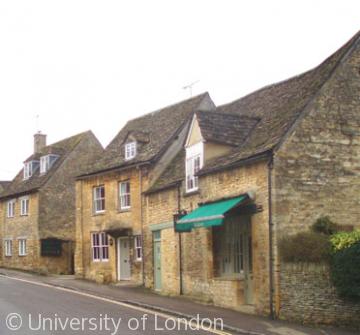Witney Street (north): Nos 3, 9 and 15, with Hunt's Yard

Several houses at Witney Street's north-west end (before the modern cul-de-sac of Sylvester Close) began as outbuildings for premises on High Street. No. 3 (The Coach House), now lit by 20th-century windows to the street, was a warehouse in the mid 19th century, associated probably with the Bull Inn and later with 99 High Street. Almost certainly the building has earlier origins, however. A cottage here was acquired in 1494 by Thomas Poole of London, who ten years later conveyed it to trustees for charitable uses. During the 16th century it was usually called a woolhouse, and in the 17th century a barn. In 1580 the lessee was Burford’s leading mercer, Simon Wisdom. (See: RH Gretton, The Burford Records (1920), 335–39, 342–3, 351, 353, 518–19)
The 19th-century façade of No. 9 (York House), with its squared coursed rubble, stone lintels with keystones, and stone door-hood, probably also hides an earlier core. The arrangement is asymmetrical, and the blocked opening to a cellar is visible just left of the doorway. Further along, the long low range divided into Nos. 15 and 15A perhaps also began as outbuildings, its sagging roofline suggesting a pre-18th-century date. No. 15A's doorway replaced a larger carriage entry, whose outline is visible in the stonework.
Nineteenth-century censuses listed several households in the area, many of them probably in Hunt's cottage yard to the north: the yard lay behind 91 High Street (which was owned by the Hunts), but opened to Witney Street also. Eight households were mentioned in 1851, headed by a gardener, tailor, milliner, labourer, ostler, fishmonger, pauper, and retired servant. A ninth house was empty.
Content generated during research for the paperback book 'Burford: Buildings and People in a Cotswold Town' (ISBN 13 : 9781860774881) for the England's Past for Everyone series

